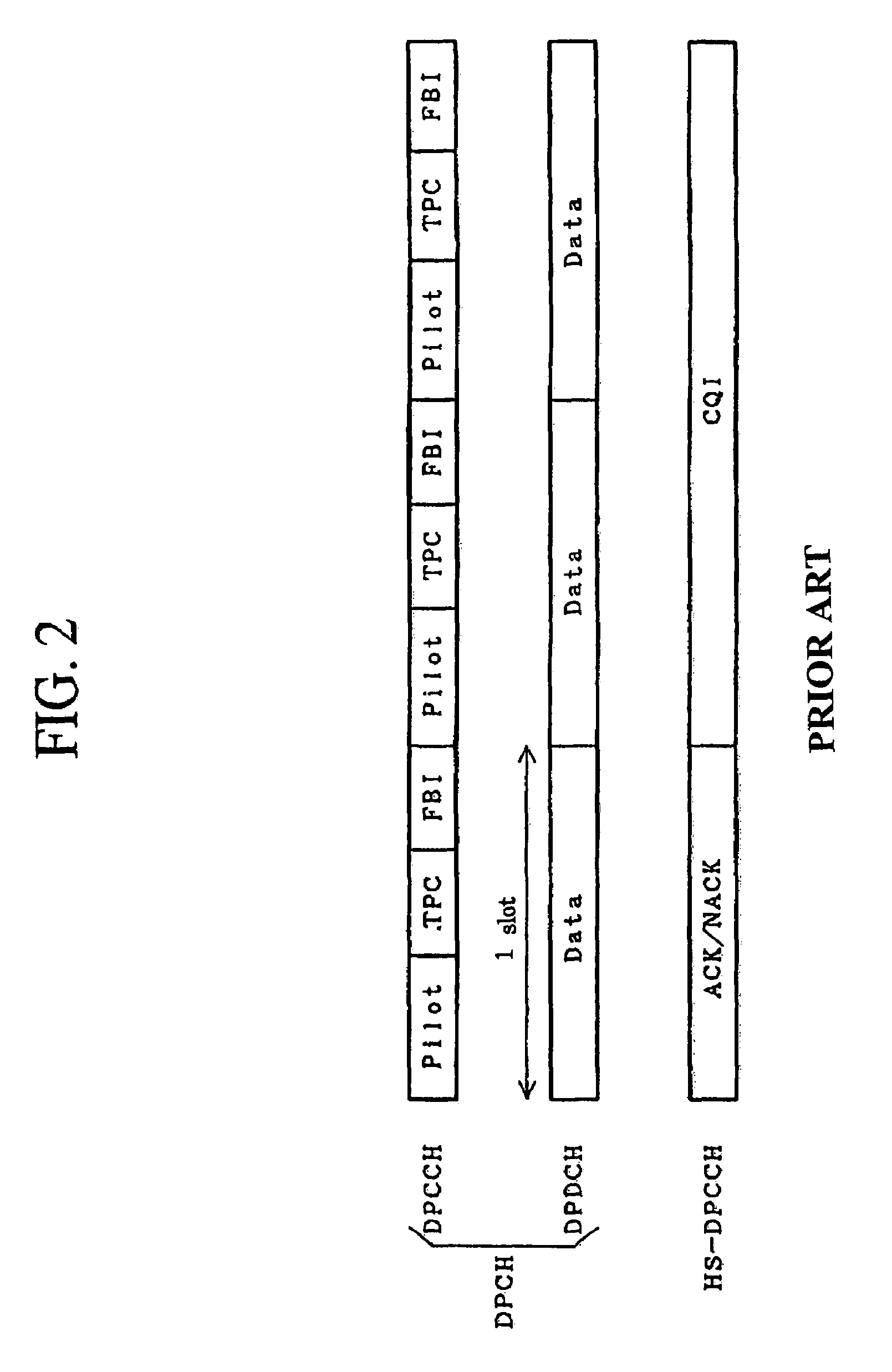Cellular system, mobile station, base station and transmission power control method as well as program to be executed for implementing the method
a transmission power control and program technology, applied in the field of cellular system, mobile station, base station, transmission power control method and program to be executed for implementing the method, can solve the problems of undesired slow follow-up to the variation in the quality of received signals, slow transmission power control cycle, etc., to improve the quality of any control signal and high quality.
- Summary
- Abstract
- Description
- Claims
- Application Information
AI Technical Summary
Benefits of technology
Problems solved by technology
Method used
Image
Examples
first embodiment
[0201]A first embodiment according to the present invention will be described in detail with reference to the drawings. FIG. 4 is a schematic diagram illustrative of a novel configuration of a cellular system in a first embodiment in accordance with the present invention. The cellular system may include plural base stations 1-1 and 1-2 and plural mobile stations 2-1, 2-2, and 2-3, provided that the base stations 1-1 and 1-2 are provided in different cells respectively. In this embodiment, the descriptions will be made by taking an example that the two base stations 1-1 and 1-2 are provided for the three mobile stations 2-1, 2-2 and 2-3. The respective numbers of the base stations and the mobile stations are optional. The present invention is, of course, applicable to another example that the three or more base stations are provided for the three mobile stations 2-1, 2-2 and 2-3. In general, however, a large number of mobile stations are provided for each base station. The applicabil...
second embodiment
[0255]A second embodiment according to the present invention will be described in detail with reference to the drawings. The cellular system of this embodiment has the same configuration as described above in the first embodiment with reference to FIG. 4. The duplicate descriptions of the configuration of the cellular system of this embodiment will be omitted. The base station 1 of this embodiment has the same configuration as described above in the first embodiment with reference to FIG. 6. The duplicate descriptions of the configuration of the base station 1 of this embodiment will be omitted. The mobile station 2 of this embodiment has the same configuration as described above in the first embodiment with reference to FIG. 7. The duplicate descriptions of the configuration of the mobile station 2 of this embodiment will be omitted.
[0256]FIG. 9 is a sequence chart illustrative of sequential operations of the cellular system in the second embodiment in accordance with the present i...
third embodiment
[0289]A third embodiment according to the present invention will be described in detail with reference to the drawings. The cellular system of this embodiment has the same configuration as described above in the first embodiment with reference to FIG. 4. The duplicate descriptions of the configuration of the cellular system of this embodiment will be omitted. The base station 1 of this embodiment has the same configuration as described above in the first embodiment with reference to FIG. 6. The duplicate descriptions of the configuration of the base station 1 of this embodiment will be omitted. The mobile station 2 of this embodiment has the same configuration as described above in the first embodiment with reference to FIG. 7. The duplicate descriptions of the configuration of the mobile station 2 of this embodiment will be omitted.
[0290]FIG. 11 is a sequence chart illustrative of sequential operations of the cellular system in the third embodiment in accordance with the present in...
PUM
 Login to View More
Login to View More Abstract
Description
Claims
Application Information
 Login to View More
Login to View More - R&D
- Intellectual Property
- Life Sciences
- Materials
- Tech Scout
- Unparalleled Data Quality
- Higher Quality Content
- 60% Fewer Hallucinations
Browse by: Latest US Patents, China's latest patents, Technical Efficacy Thesaurus, Application Domain, Technology Topic, Popular Technical Reports.
© 2025 PatSnap. All rights reserved.Legal|Privacy policy|Modern Slavery Act Transparency Statement|Sitemap|About US| Contact US: help@patsnap.com



